It’s amazing to watch our babies learn social skills, smile and interact. Professor Angelica Ronald looks at the stages of social development and how parents can encourage their baby at each step.
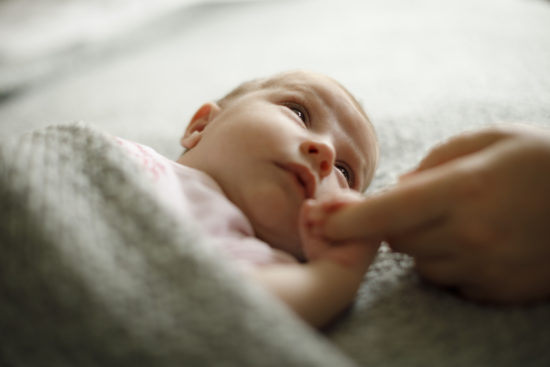
When your newborn baby seems to do little but sleep and feed, you might be surprised to learn that they’re actually starting to develop their social skills. Babies show signs that they’re naturally inclined to being with and interacting with others soon after they’re born.
Even babies who are a few days old prefer looking at face-like patterns than at other sorts of patterns. And they’re already noticing whether people are looking at them. Babies in one study were more interested in open eyes than in closed eyes.
Newborns seem to copy other people’s facial expressions too. For example, a newborn might stick their tongue out when looking at an adult doing the same thing. Experts think these are the very early stages of learning to imitate others.
Behind the scenes, natural chemicals in your baby’s brain are helping them to form a social bond and attachment to you and their other caregivers. Both mums and newborns have these chemicals and they include the hormone oxytocin.
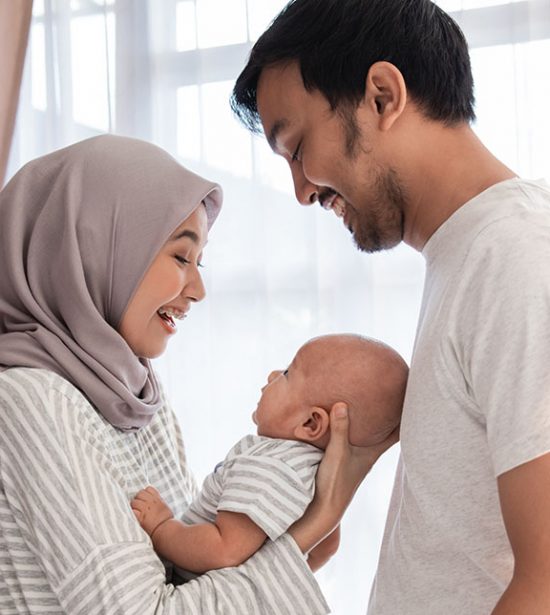
When your baby’s a newborn, you wouldn’t be alone in thinking that they don’t ‘give much back’ socially. They don’t exactly chat to you about how their day is going…just yet.
So it’s wonderful when you see your baby’s first smile. This often happens between six to eight weeks, although not all babies are the same.
At around the same time, babies start to adapt their cry to signal different things. This shows their new ability to express different feelings. You might start to notice that one cry is more likely to mean ‘I’m hungry’ and another ‘I’m bored or tired’. This is one of your baby’s first steps towards communication.
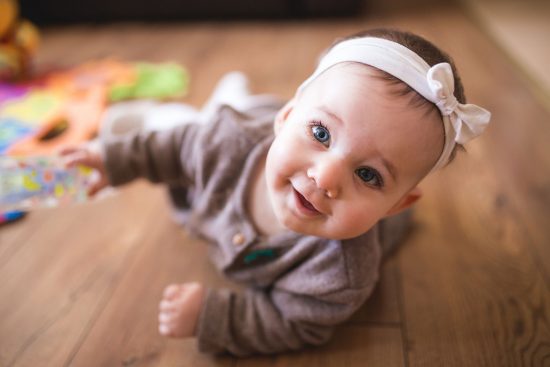
Babies’ social signals become more varied as they continue to develop. Experts think that babies also start to use information from people’s faces and voices from when they’re around three and six months old. Babies use this information as they begin learning how to tell apart emotions such as happiness and sadness.
Babies can also recognise their own name from around three to six months. Handy to know for next time you need their attention.
At this age, babies often start to point to show caregivers something and communicate. Babies use pointing to request something and to draw caregivers’ attention towards something.
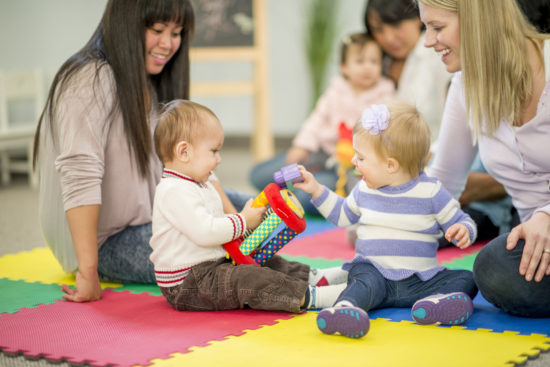
Joint attention
Pointing is thought to form an early part of what is known as ‘joint attention’.
This is a social activity in which babies learn to follow the line of their caregiver’s eyes to where the caregiver is looking. It’s called joint attention because the baby is ‘joining’ the adult in looking at something by following their gaze.
They only want you
Don’t be surprised if your once sociable baby who was happy to be held by anyone now has a good howl when a friend holds them. This wariness is just part of your baby starting to develop a secure attachment to you and your partner, or other close caregivers.
Things are starting to make sense to your baby by this age. They’re starting to combine their developing social skills with learning about what’s around them.
Babies learn how their parent feels about something to help them learn how to feel about it
You know best
Babies use joint attention (see above) along with their growing ability to tell apart different emotions. So babies begin to learn how their parent feels about something to help them learn how to feel about it.
That’s how if you show your repulsion at seeing a slimy slug on the doorstep, your baby will look where you’re looking and associate slugs with disgust. That’s pretty clever if you think about it. Especially if the object was actually something a bit dangerous, like a poisonous snake.
So far but so near
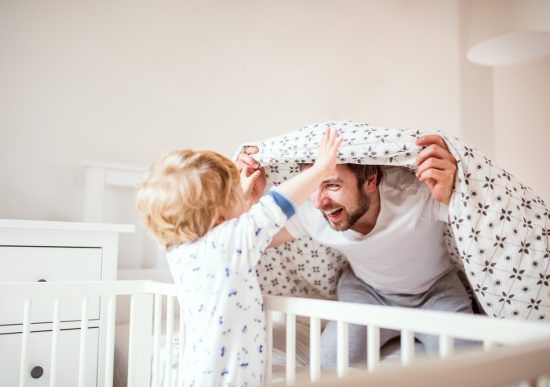
Many babies are increasingly mobile at this age – crawling, walking or running everywhere – and keeping you on your toes. But babies often combine their new skills in moving with their continued desire to be attached to their closest caregivers.
Babies often explore around them, have a good rummage in their toy box and then come back to ‘check in’ with you regularly. It can sometimes seem as if there is a really useful but invisible piece of elastic bringing your baby back to you.
The games and the giggles
If they haven’t already, your baby might enjoy playfully tricking and teasing you at this age. Things like offering you an object and then taking it away, tricking you about where they are or an object is, and showing off with a cute giggle.
All these behaviours show that your baby wants to engage with you and with what you do and don’t know. They’re starting to think about and figure out what other people know.
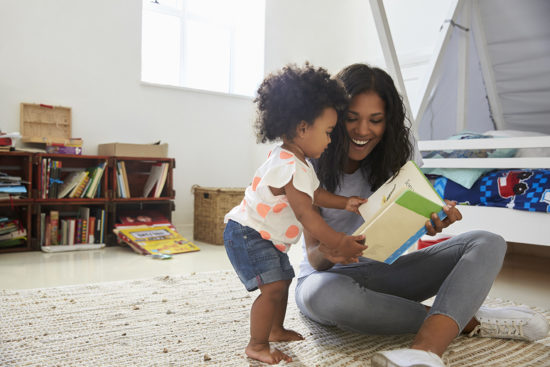
No it’s mine…
Now is when your child will probably start fiercely protecting their toys from toy thieves or, well, siblings. It’s common to get jealous of others too at this age.
Another typical thing you might see is that babies tend to play side by side more than interactively at this age. These signs of jealousy and selfishness might come as a surprise but try not to worry, they’re common.
Your baby will be developing a whole load of complex skills at the same time at this age. This will include learning language, understanding other people, and learning about their and others’ emotions. So you can help to gently nudge them to learn to share and be kind.
This is also an age when babies often show empathy and a desire to help and cooperate. They might start doing things like joining in with tidying up or hanging up laundry.
It’s you, baby
Experts think that babies of around 18 to 24 months start to recognise their reflection in the mirror as themselves. If a small mark is put on a baby’s forehead, at this age the baby will touch their own forehead when they see themselves in the mirror. This shows that they realise they are seeing their own head in the mirror, not some other child’s.
Making eye contact, talking to your baby, playing with them and showing interest in them are all brilliant ways to encourage social development.
Talk to your baby rather than simply talking to someone else
Responding when they share things with you is helpful. Great games for development include playing peek-a-boo in the first year and pretend play in the second year.
Social development is strongly intertwined with the development of communication. Talking to your baby rather than simply talking to someone else in the same room will help them develop communication and language skills.
Try to remember that babies’ typical social development varies massively. Just because your mum friend’s child is chatting away and yours isn’t, doesn’t mean there must be something wrong. Read our article which discusses ‘Are babies the same?‘.
If you’re worried about your child’s social development, talk to your GP. The most common types of conditions involving difficulties with social interaction in early childhood are autism spectrum conditions. But it’s not yet clear whether we can see signs of autism spectrum conditions in children’s behaviour in the first year of life.
Autism spectrum conditions affect approximately one in every 100 children. Some genetic syndromes, which are rarer than autism spectrum conditions, involve delays or different pathways to social development.
Professor Angelica Ronald, Ph.D., is the Director at Genes Environment Lifespan (GEL) laboratory, Centre for Brain and Cognitive Development (CBCD) at the Department of Psychological Sciences at Birkbeck, University of London.
Our support line offers practical and emotional support with feeding your baby and general enquiries for parents, members and volunteers: 0300 330 0700.
You might find attending one of NCT’s Early Days groups helpful as they give you the opportunity to explore different approaches to important parenting issues with a qualified group leader and other new parents in your area.
Make friends with other parents-to-be and new parents in your local area for support and friendship by seeing what NCT activities are happening nearby.